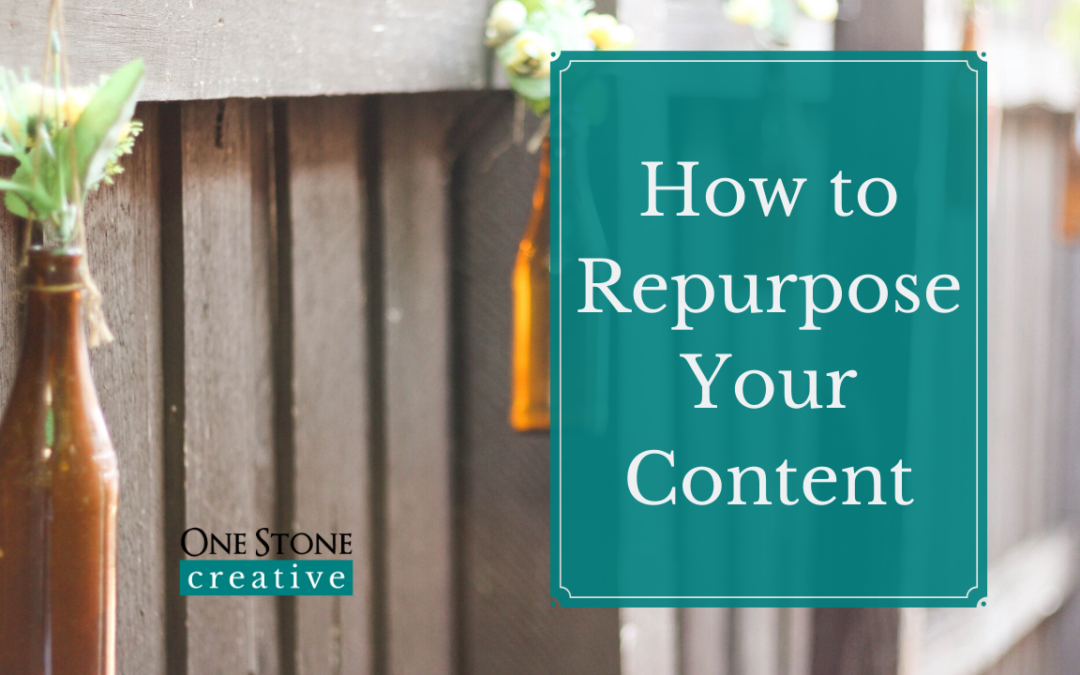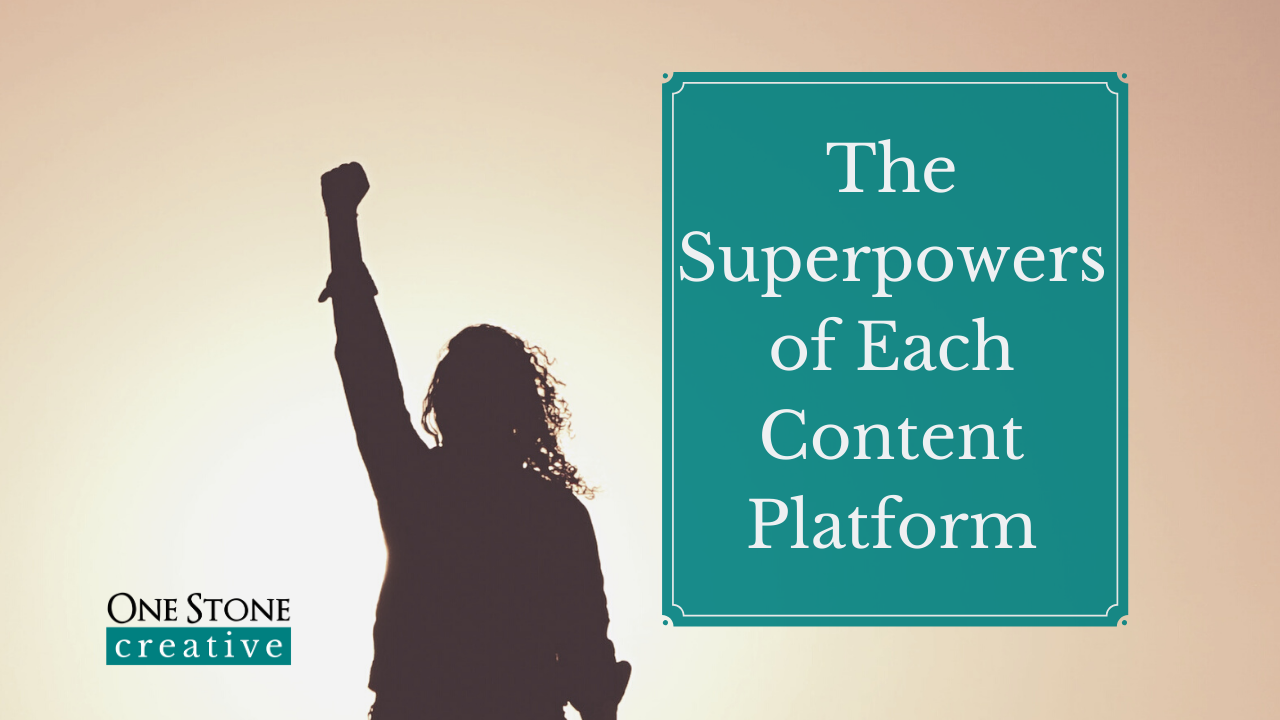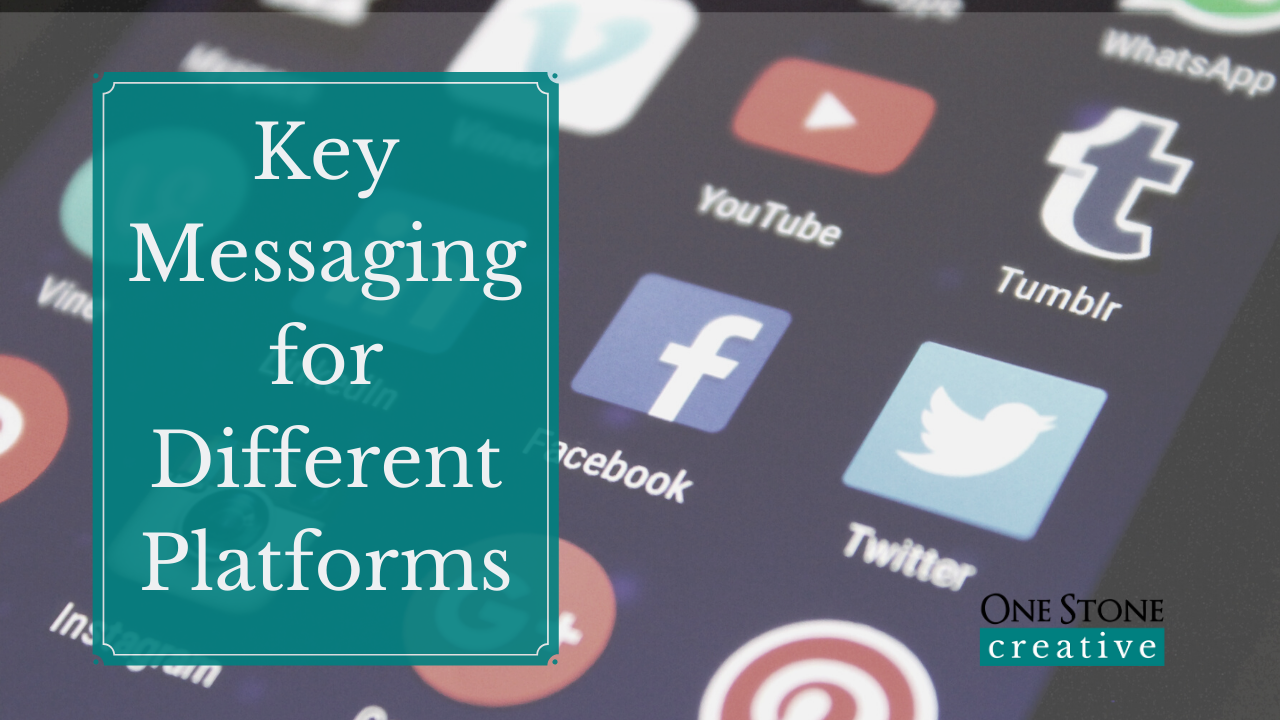I’m not going to be the first person to tell you that repurposing your content is a good idea. I’m probably not even the first person this week to tell you that. There is tons of information out there about how to get more mileage out of your content, keep your feeds and posts fresh without having to do additional work, and earn multiple kinds of revenue from a single creative effort. A lot of it is excellent advice! But a lot of it sucks. Now, it doesn’t suck because the content creator is attempting to mislead you, or in any other way, behave nefariously (presumably!). It sucks because they mix up two closely related but fundamentally different processes. A lot of the time, when people are recommending that you repurpose your content, what they suggest are ways to reuse it. Reusing and repurposing content are different things. This isn’t just splitting hairs. Reusing content is when you take something you’ve made and put it into a new platform or context, sometimes with a little slicing and dicing, but without any meaningful change. Repurposing, on the other hand, is when you take the subject matter of your content and transform it, so it fits well in a new platform or context.
Both Reusing and Repurposing Have Value
Both reusing and repurposing content have their place in a content marketing strategy. Knowing what those places are and using them judiciously is going to be the most effective way to get your content to do double and triple duty in your business. Another way to look at it is that when you reuse content, you’re not putting in much additional effort, which is an amazing time-saver. Still, you’re not gaining any extra benefit by utilizing the superpowers of each content platform. When you repurpose your content, on the other hand, you’re taking the most critical part of your content – the subject matter – and making sure that it gets maximum Value on each platform you use it on. This is like the difference between reheating leftover rice and adding your leftover rice to some fresh veggies and a nice egg for a lunchtime stir-fry. Both have their place – sometimes you’re just in a rush, or your stomach is a little unsettled, and you need plain food, so reheated rice does the job perfectly, but a stir fry is a more exciting and healthful option a lot of the time. After eating either, you’ll be less hungry, but after the stir fry, you’ll probably be a lot more satisfied.
Reusing content gets the most value out of a piece of content. Repurposing content gets the most value out of your insight and expertise.CLICK TO TWEET
Let’s look at an actual content-related example before I get hungry. If you record a video for your YouTube channel, you have options for reusing the content. You could upload it to the member’s area of your site as a bonus. You might choose to upload it to your Facebook group to provide background for a discussion. Or you decide that linking to it in an email series you’re nurturing leads with is a great option. These are all valuable ways to reuse your video, and there’s no good reason not to do them! However, it’s not quite the same as repurposing that video. Here’s how you could repurpose the same video using the superpowers of each content platform:
- Pull out the key points of your script and expand them into an in-depth and SEO-rich blog post that you can promote to your network,
- Create a series of follow-up actions your fans could take and share them on social media, or
- Include a short audio clip from it in your podcast as an example of the topic you’re covering there.
The trick is looking at what elements of each piece of content can be massaged and optimized to work well on other platforms, then putting in the time and effort to make those changes, and deploying them in the best possible format for each platform you use. This is the easiest to accomplish when you have specific goals for each platform you’re using, and the metrics that you’re tracking for each. (Check out our post on Turning Your Business Goals into Content Metrics if you need a refresher on that!) Is it as easy as reusing? No. Is it a better way to get more content working effectively for your business? Very often, yes.
What Happens When You Reuse Instead of Repurpose Your Content?
I’m not going to pretend that the sky will fall if you slap your podcast audio over a still image and plunk it into your YouTube channel. (It won’t.) Indeed, people who listen to podcasts on YouTube exist (although a less podcast-friendly platform I can’t imagine). You might even get a listener or two who wouldn’t have heard about you otherwise. The harm isn’t in doing it when you shouldn’t; it’s a crying shame of what could have been. Reusing when you should repurpose makes your content less effective, less compelling, and less authoritative than it might be otherwise. It doesn’t make it bad, or useless, or damaging to your brand (usually), but it lacks the polish and professionalism that most of us are trying to cultivate. In the worst-case scenario, you might alienate people who can’t consume the content the way they really should.
One example of this that really gets under my skin is when livestreams get downloaded and used on blogs or YouTube channels. There is a beautiful, dynamic two-way exchange of energy happening in a livestream that doesn’t exist when watching after the fact. And those people who watch a recording of it feel that. They’re not there when you, as the host, are saying, “What do you think? Do you understand? That’s a great comment!” There’s a disconnect. They might still learn a lot, of course, but will they develop deeper feelings of warmth and liking for you and your brand as they would if they weren’t subtly excluded from that live experience?
Nope. They won’t.
What if, instead, you took the key information from your livestream, re-wrote it as a standalone video script, and recorded it complete with the smiles, gestures, demonstrations, and links specifically for viewers watching later? Now you will be developing that relationship and engagement.
At the end of the day, like so much of what we do as content creators, selectively repurposing vs. reusing is about making sure our audiences have the best possible experience.
How to Effectively and Strategically Repurpose Your Content
It’s time to get down to the brass tacks. How exactly do you repurpose your content? I’ve got 6 steps for you. For each piece of content that you want to repurpose:
Step 1. Write down the platform you made the content for, and what your main goals for the users of that content are. For example, this blog post will be on our website, and I want readers to understand the difference between repurposing and reusing, and when to use them. (It would be nice if they share it or link back to it as well!)
Step 2. Write down the key points and takeaways from the content piece. The critical points of this post are that reusing content isn’t always the best way to get more mileage out of it, and there are strategic methods to repurpose for a better experience. Also, the steps are ones that people can use again and again.
Step 3. Write down the platforms you want to repurpose it TO, and what the goals you have for users of the content there. I want to repurpose the definition section of this article into a YouTube video, where I would want people to comment on and share it. I would also like the clients of One Stone Creative to use the steps of repurposing to make the most of their podcast episodes, and for them, the most important goal is that they can quickly and easily create a habit of doing it.
Step 4. For each new platform you want the content to be on, ask yourself, “How do I need to present this information to achieve that goal?” To make a sharable YouTube video, I’ll want to make sure it’s short, with a different conclusion that wraps up a single section of the content. To help my clients use this material, I could create a worksheet that they can fill out with each of these steps.
Step 5. Write down the new content format or section for each platform. This is your repurposing list! I now have the definition of repurposing and reusing for the video, and the repurposing steps to turn into a worksheet/spreadsheet.
Step 6. Repurpose the content, and send it out into the world. (Updates TBD!)
A Rule of Thumb for Content Repurposing vs. Reusing
If you’re ever not sure if you should repurpose or if you can reuse, ask yourself this, “Do the end-users of the content have the same, high-quality experience with this content everywhere they encounter it?” If the answer is yes, then you can probably reuse with no problems. If the answer is no (or weeeeeellllllll), then you might want to consider repurposing seriously. I know that the last thing you want is a pile of new work when you were hoping for advice on how to do a lot LESS work for more overall benefit. And I get that this seems like a whole process. It really, truly is worth it, however!
Get the Most Benefits from Your Hard Work
Reusing content can help your business grow, but it doesn’t give you all of the benefits that the expertise, time, research, insight, and effort that went into your original piece deserves. Your content deserves to be used in the best ways possible. When you strategically repurpose that content to work well on different platforms, it will much more effectively drive your business goals.
About the Author

Megan Dougherty is the Co-Founder of One Stone Creative. She has been a digital marketer for over a decade, with a strong focus on digital course creation, content marketing and multi-media content production. As the co-founder, she takes pride in high-quality, on-time work and helping people get their messages to the people who need to hear them. She likes spreadsheets, deadlines and creating online experiences that are good for both the creators and the end-users. She hates jumping out of airplanes, mushrooms, and hyberbolic language in messaging. When not helping to produce podcasts courses and videos, she bakes pies and watches Star Trek. (Janeway forever.)




